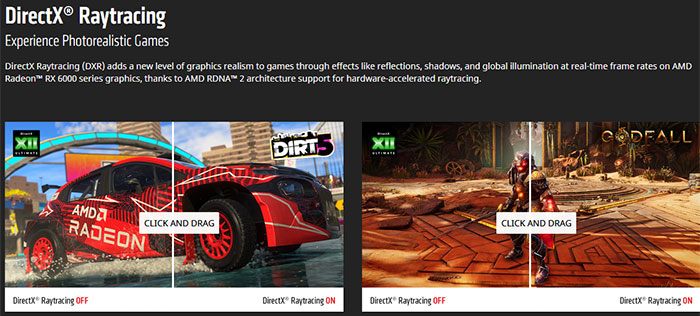Last week HEXUS reported upon some AMD RDNA 2 real-time raytracing performance indicators which came to light. AMD's footnotes on the RDNA 2 technologies page claimed a 13.8x speedup (471 FPS) using HW based raytracing vs using the Software DXR fallback layer (34 FPS) at the same clocks. Some sources noted that an Nvidia GeForce RTX 3080 scores approx 630 FPS in the same DXR test, while the previous gen RTX 2080 achieved 308 FPS.

Later in our article we noted that among the first games to support raytracing on AMD RDNA 2 GPUs would be Godfall, developed by Counterplay Games for Gearbox. Now the official AMD YouTube channel has provided a showcase video which provides a look at the splendid gameplay visuals, and some further details about the game.
Godfall is based upon the latest Unreal Engine 4 release running on Microsoft's DirectX 12 Ultimate API. Collaboration between Counterplay and AMD means that Godfall supports lots of the new RDNA 2 compatible technologies such as; FidelityFX, DXR 1.1 raytracing, and Variable Rate Shading (VRS).
To run smoothly at 4K with Ultra HD textures we hear that Godfall requires "tremendous memory bandwidth". In particular the 4K x 4K texture sizes at this max quality setting eat up 12GB of VRAM. The developers says that the upcoming Radeon RX 6000 series graphics cards with 16GB of VRAM and supporting AMD tech, the game can run at high frame rates with these maximum settings enabled. Further into the video you will see Godfall running with raytraced shadows.

If you want to A/B raytracing on and off in Godfall (and Dirt 5) you can head on over to the official AMD and Microsoft DirectX 12 page and scroll about half way down the page for some interactive sliders.

Separately, the official Godfall Twitter account shared the minimum and recommended specs for playing Godfall. I've embedded the table htat was shared directly above.
Godfall launches for PC on the Epic Games Store on 12th November.






